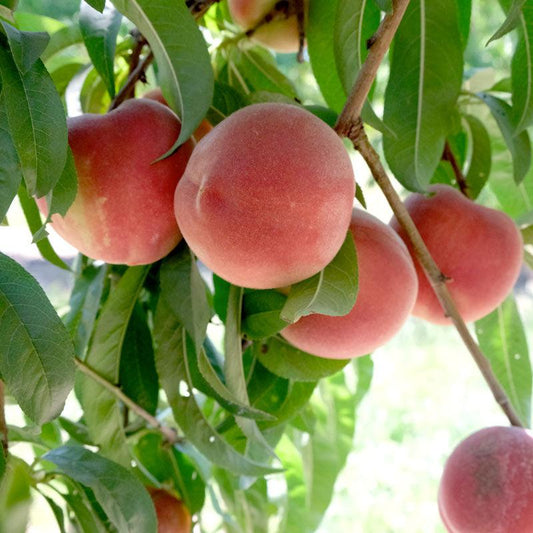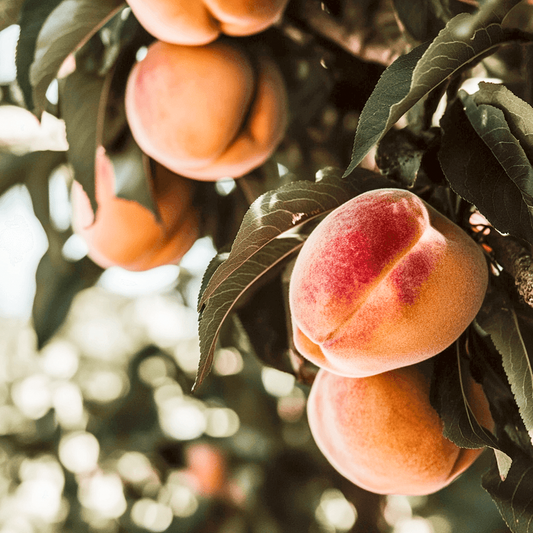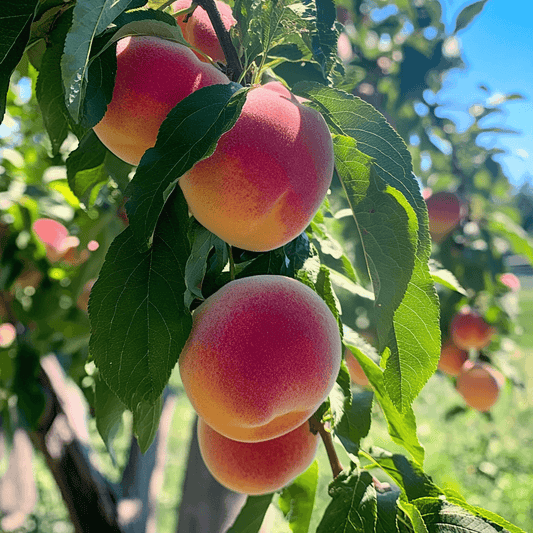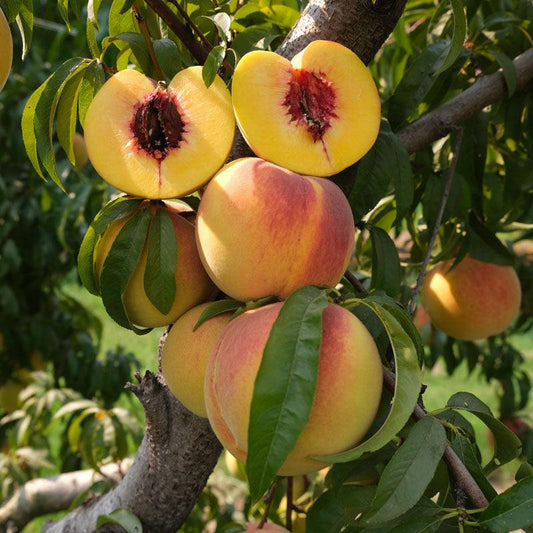Care for a Peach Tree: How Much Water Does a Peach Tree Need in Its First Year
Watering is the single most important task during a peach tree’s first year. A newly planted tree has a small root zone, so consistent moisture helps it anchor, grow leaves, and later produce fruit.
In this guide, you’ll learn how often to water new peach tree plantings, how much water does a peach tree need, and simple tricks to prevent problems that can lead to root rot. We’ll also share tools and resources to make tree care easier.

Peach Tree Basics: Sun, Soil, and Timing
Peaches love full sun—at least 6–8 hours daily. They prefer well-drained soil; amend very sandy soil with compost to hold moisture and nutrients. If you’re starting from seed, use this clear walkthrough: planting peach seeds step-by-step. Gardeners in warm climates can also check peach trees in Zone 9 tips. During the growing season, plan on deep, regular watering that reaches the tree root zone.
How Often Should You Water a Newly Planted Peach Tree?
For the first two weeks after planting, water deeply every other day so moisture reaches 12–18 inches into the soil. From weeks 3–12, water 2× per week. After three months to the end of year one, water weekly—more during heat waves and less after soaking rains.
Put simply: how often should you water a newly planted peach tree depends on weather, soil, and drainage, but the goal is steady moisture without puddling.
Daily vs. Weekly Needs
You’ll see many versions of how much water does a peach tree need per day. Rather than daily sips, give a young tree deep soaks: 5–10 gallons per session, adjusted by soil and temperature.
This approach trains roots to grow downward and prevents shallow, thirsty roots.

How Much Water Does a Peach Tree Need?
A good rule of thumb is 1 inch of water per week (rain plus irrigation) for fruit trees. In hot, dry spells, increase to 1.5–2 inches.
Translate that to an amount of water of roughly 5–10 gallons per irrigation for a first-year peach, ensuring moisture reaches the root zone. Use a soil moisture meter to check depth, or dig a small test hole and feel the soil.
Best Watering Methods
Deep, slow watering is best. A soaker hose or drip irrigation system delivers steady moisture right where roots need it.
- Browse drip irrigation options for complete kits.
- See soaker hose and fittings to create a ring around the canopy.
Place lines at or just outside the canopy edge (the future drip line) so water encourages outward root growth. Top the area with organic mulch—straw, shredded leaves, or biodegradable mulch—to keep soil cool and moist.
Factors That Change Watering Frequency
- Soil type: Sandy soil drains quickly—water a bit more often. Heavier soils hold water—space irrigations to avoid puddling.
- Weather: Hot, windy, and dry conditions increase water needs. Cooler, cloudy weeks reduce them.
- Tree age: A newly planted tree needs more frequent watering than established trees; mature trees still benefit from deep soaks during fruit sizing.
- Nutrition: Balanced feeding supports root growth; see liquid fish fertilizers and organic potting soil for young container-grown peaches.
Signs of Overwatering and Underwatering
Learning the signals is key to proper watering and avoiding overwatering and underwatering.
Signs of Overwatering Peach Tree
Drooping yet soft leaves, yellowing, slow growth, musty soil, and fungus gnats. Consistently wet soil can lead to root rot. If you suspect this, lengthen the time between irrigations and improve drainage.
Signs of Underwatering
Crisp or curling leaves, dry topsoil down several inches, wilting that improves quickly after watering.

Pests and Diseases to Watch
Stressed trees invite pests and diseases. Keep water consistent to reduce problems like leaf curl; see our guides on peach leaf curl control and the companion leaf curl video. During fruiting, monitor ants and protect fruit: keep ants from eating peaches.
Seasonal Timing and Harvest
Watering needs rise as fruit develops; plan extra deep soaks 4–6 weeks before harvest. For planning, read when peaches are in season. Planting soon? Explore bare root peach trees.
Quick Tips for Watering Success
- Circle a soaker hose at the canopy edge and water long enough to reach 12–18 inches into the soil.
- Mulch 2–4 inches deep (keep it a few inches off the trunk).
- Track rainfall so you don’t double water; let trees water needs guide you.
- Feed modestly in spring; here’s a primer: how to care for a peach tree with fertilizer.
- New to peaches? Review regional advice: Zone 9 planting tips.
Conclusion
So, do peach trees need a lot of water? They need the right water, delivered deeply and consistently. Focus on sunlight, soil, and steady moisture to support roots, prevent stress, and grow sweet, juicy fruit. With smart scheduling and simple tools, you’ll master how often to water peach tree plantings from year one onward.










1 comment
Very informative. I have been in farming for years. I have planted Nut Trees for years but planted a few Peache trees with some success. But got lots of info from reading you pages. Keep up the great info.